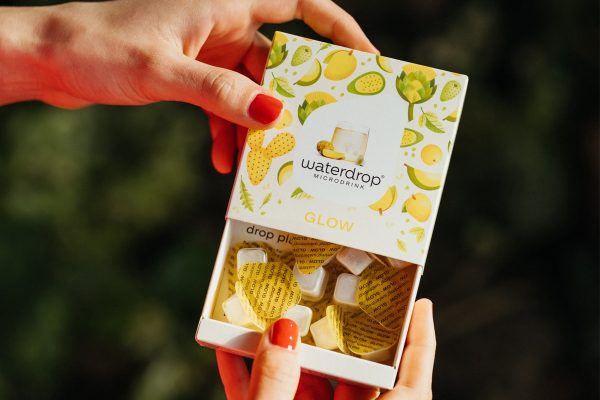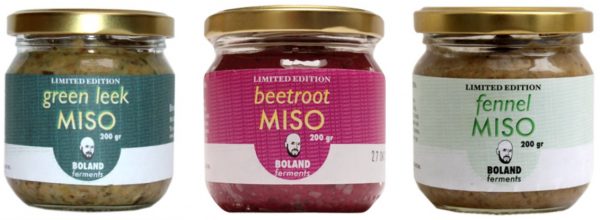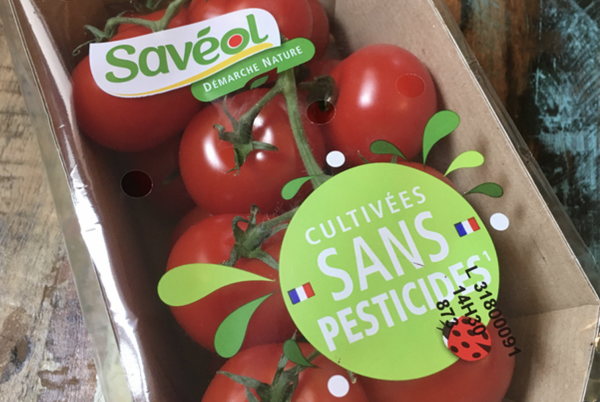As we look ahead, the way we eat and produce food is evolving rapidly. Here are five food trends set to shape our food future in 2025. For a full overview of these trends, consider booking a lecture or a ‘trendslation’ workshop with us.
Food trend #1 Carbon Crafted: Turning CO2 into Delicacies
With the growing concern over excess CO2, a new generation of startups is turning this surplus into a valuable ingredient for food production. Companies like Savor are leading the way with innovative products like a revolutionary butter, created using captured carbon dioxide. The process involves advanced fermentation techniques where CO2 is transformed into lipids, which are then refined into a buttery substance. Solar Foods has also developed Solein, a revolutionary protein produced using air, water, and renewable electricity. This protein is created through a fermentation process that combines CO2 with nutrients, resulting in a high-protein biomass that can be used in various food products.

In the future we will have more foods crafted from abundant CO2.
Food Trend #2 Micro Drinks and the new water
Transporting ready-to-drink beverages around the world is a logistical challenge that puts a strain on resources and the environment. In response, we’re seeing a rise in micro drinks—concentrated flavour enhancers designed to be mixed with water at home. These drinks not only reduce the need for extensive transportation and packaging but also allow consumers to customise their beverages to their tastes. Brands like Malaysian Once Coffee provide concentrated coffee shots for on-the-go lifestyles, while Waterdrop specialises in flavour cubes that elevate ordinary water into a gourmet experience. As hydration becomes a growing focus in the drinks industry, we’re also seeing increased attention to water quality. Innovations in water purification, such as the filters offered by TAPP Water, Aqua Blu, and Soma, are becoming more prevalent as people seek to reduce their exposure to microplastics and other contaminants.

Micro drinks are a more eco efficient solution
Food Trend #3 Local Miso: The Umami Revolution
The quest for umami has driven chefs around the world to rethink miso, exploring its potential beyond traditional Japanese cuisine to create locally inspired variations. Miso, known for its rich umami flavour, has become increasingly important with the rise of plant-based cooking. It’s also an excellent way to repurpose food waste. Today, there’s a growing miso craze that reaches far beyond Japan. For example, Dutch innovator Miso Erika Hirose has created miso from local ‘capucijners’ and repurposed bread, blending traditional techniques with regional flavours. In Belgium, chef Kyle Boland is a true fermentation champion, crafting unique miso blends like red beet, fennel, and leek miso, available for purchase through his web shop.

Local miso’s made by chef Kyle Boland
Food Trend #4 Pesticide-Free and Organic
As awareness of the environmental and health impacts of pesticides grows, consumers are increasingly demanding cleaner, more sustainable food options. The shift towards organic and pesticide-free produce is gaining momentum, reshaping the offerings in retail. Reducing pesticide use not only helps protect ecosystems but also supports biodiversity and promotes healthier eating habits. Retailers such as Plus and Lidl are expanding their organic ranges, with Plus offering organic products for a same price as its non-organic equivalent and Lidl aiming to double its offerings in the near future. A-brands are offering more and more organic sub ranges like Unox, Bonduelle, Arla, Barilla and Bertoli. In addition to organic products, we’re also seeing a rise in crops just grown with reduced or no pesticide use, marketed under claims of being pesticide-free. A prime example is the French vegetable brand Savéol, which is leading the way with its commitment to pesticide-free produce. Do you like to know more about Organic and regenerative farming and how to deal with this interesting subject as a brand. Please see our blog

In future we will see more and more ‘pesticide free’ claims
Food trend 5 #Tiktokian Cuisine: The Rise of a New Food Culture
A new culinary movement is emerging on TikTok, shaping how Gen Z and Millennials approach food and cooking. This “Tiktokian Cuisine” is defined by its simplicity, visually engaging cooking techniques, a touch of humour, and a focus on maximum sensory impact—vibrant colours, rich textures, bold flavours, and even sounds that appeal to the senses.
Creativity is at the heart of this kitchen culture. Ingredients and recipes from around the world are mixed with abandon, popular restaurant dishes are recreated at home, and appliances like air fryers and grill presses are used in inventive ways. This culinary trend also embraces straightforward, health-conscious ideas, such as high-protein, low-calorie, or plant-based options.
One of the defining features of Tiktokian Cuisine is its love for hacks and the innovative use of “old” ingredients in new ways. For instance, cottage cheese is experiencing a revival, starring in protein-rich wraps, low-calorie cheesecakes, and even cottage cheese ice cream. Other trending food ideas on TikTok include making your own Dubai bar (a chocolate bar with crispy vermicelli and pistachio paste), grating frozen fruit over desserts and bowls, coffee mousse, upgrading instant noodles into full meals, and, of course, the ever-popular pasta bakes.

Good old cottage cheese is rediscovered as a multi-purpose ingredient in Tiktokian cuisine
If you’re interested in exploring more food trends and understanding how they can create opportunities for your food business, don’t hesitate to get in touch.
Image sources:
Image 1 and 5 are AI generated
Image 2 by Waterdrop
Image 3 by Kyle Boland
Image 4 by Savéol
